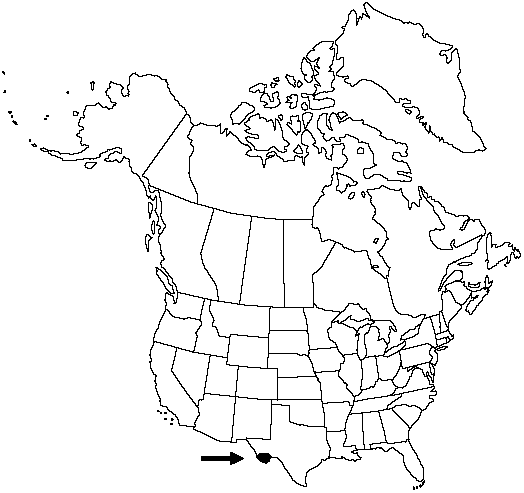Difference between revisions of "Pellaea cordifolia"
Amer. Fern J. 70: 26. 1980.
FNA>Volume Importer |
FNA>Volume Importer |
(No difference)
| |
Revision as of 18:55, 24 September 2019
Stems compact, ascending, stout, 6–10 mm diam.; scales uniformly orange-brown and thin, lanceolate to ovate, largest scales 0.3–1 mm wide, margins dentate. Leaves somewhat dimorphic, sterile leaves shorter than fertile leaves, clustered on stem, 15–50 cm; croziers not conspicuously pubescent, densely scaly. Petiole straw-colored, tan, or gray, not lustrous, rounded or slightly flattened adaxially, without prominent articulation lines. Blade ovate-deltate, 2-pinnate proximally, 5–20 cm wide; rachis tan throughout, straight to slightly flexuous, rounded or flattened adaxially, glabrous. Pinnae perpendicular to rachis or slightly ascending, not decurrent on rachis, usually with 3–15 ultimate segments; costae straight to slightly flexuous, 25–100 mm, longer than ultimate segments. Ultimate segments round-cordate to deltate-cordate, 5–15 mm, herbaceous to leathery, glabrous or puberulent; margins recurved on fertile segments, covering less than 1/2 abaxial surface, borders whitish, crenulate; apex rounded or retuse. Veins of ultimate segments usually evident. Sporangia short-stalked, containing 64 spores, not intermixed with farina-producing glands. 2n = 58.
Phenology: Sporulating summer–fall.
Habitat: Rocky slopes and ledges, usually on volcanic substrates
Elevation: 1000–2500 m
Discussion
The diploid Pellaea cordifolia has often been treated as a variety of the Central American and South American apogamous triploid, P. sagittata. The two taxa are distinguished by a number of qualitative morphologic features (A. R. Smith 1980), and it seems unlikely that they represent cytotypes of a single species. A. F. Tryon (1957) suggested that P. sagittata may have originated through hybridization between P. ovata and P. cordifolia (as P. sagittata var. cordata).
Selected References
None.
